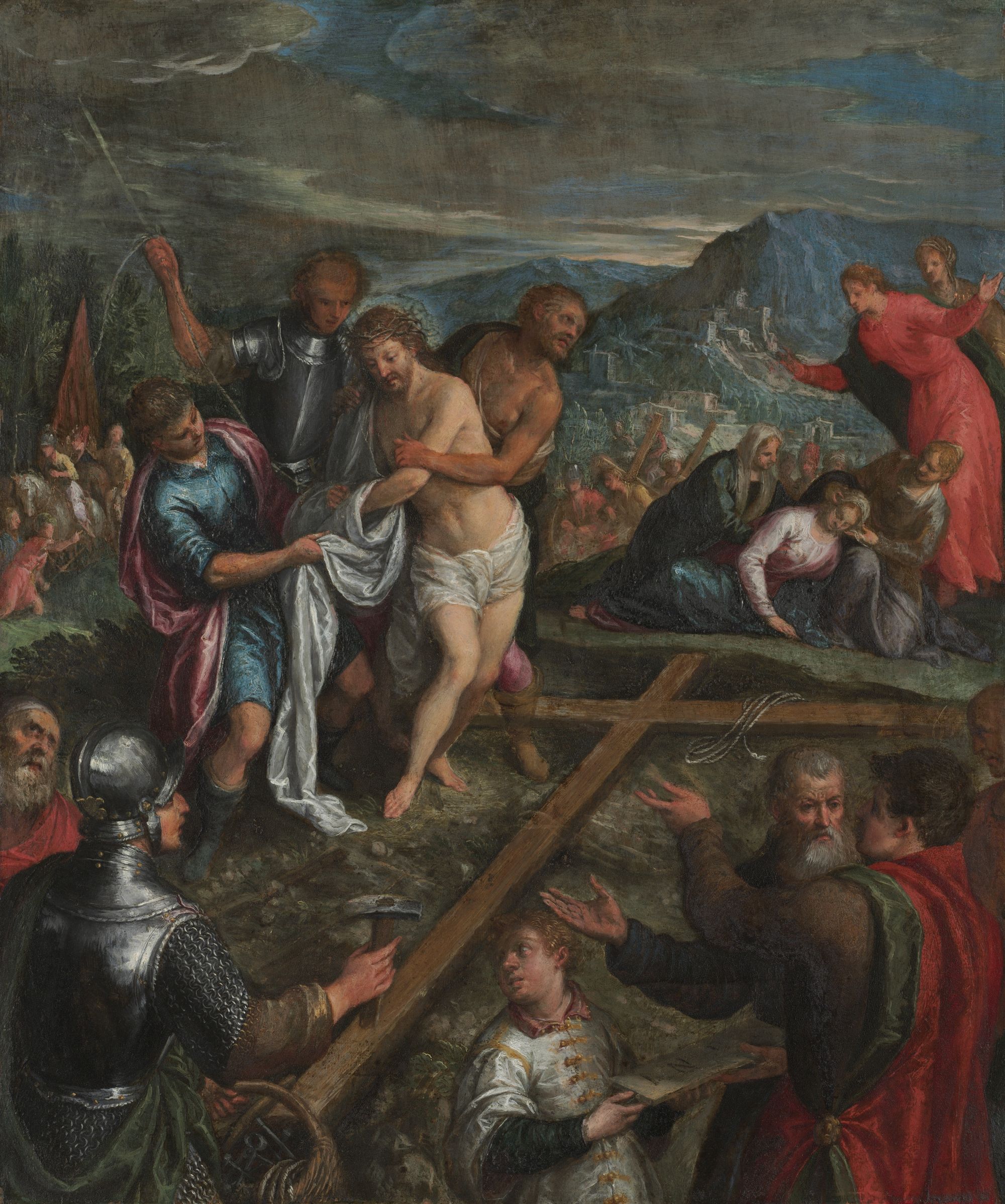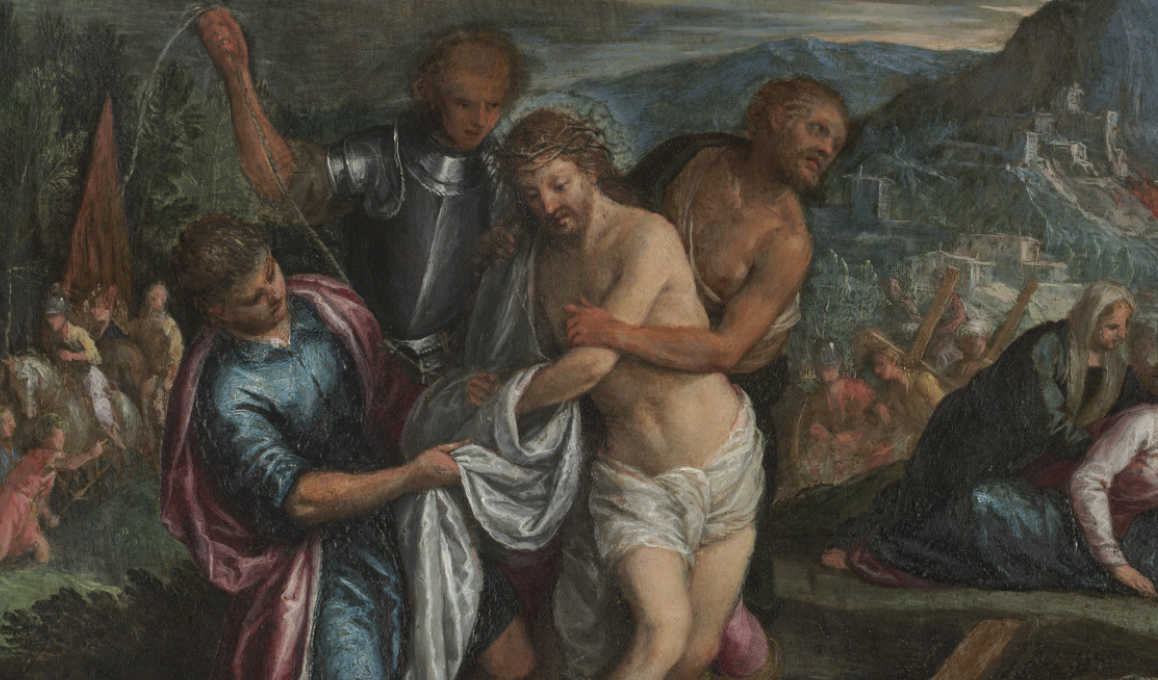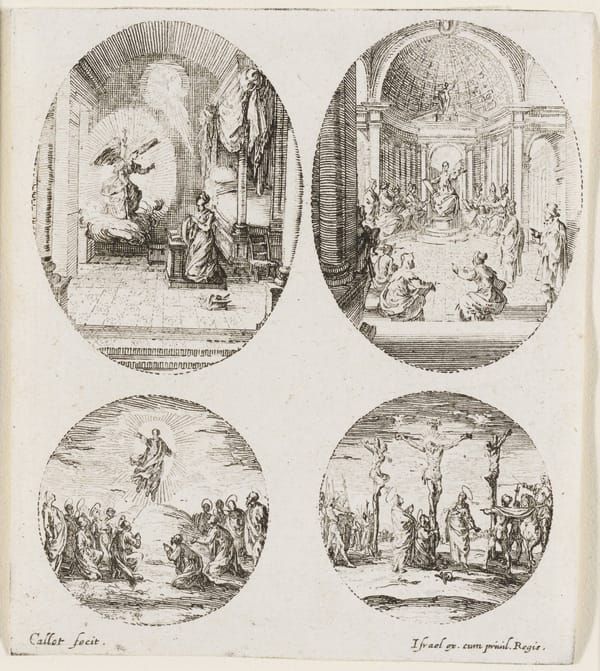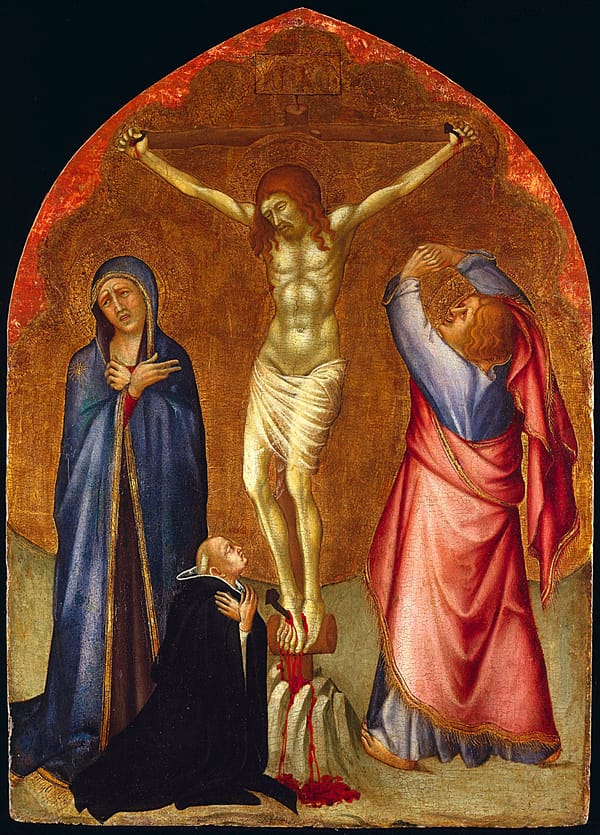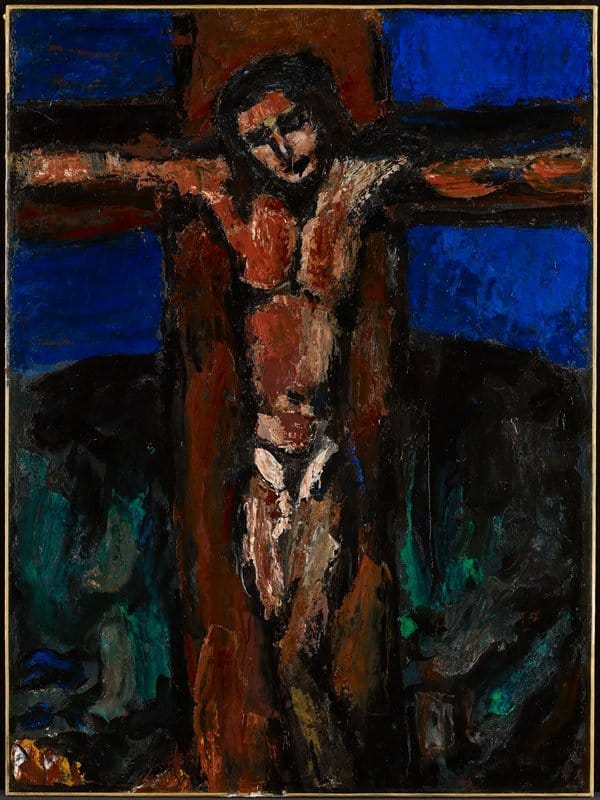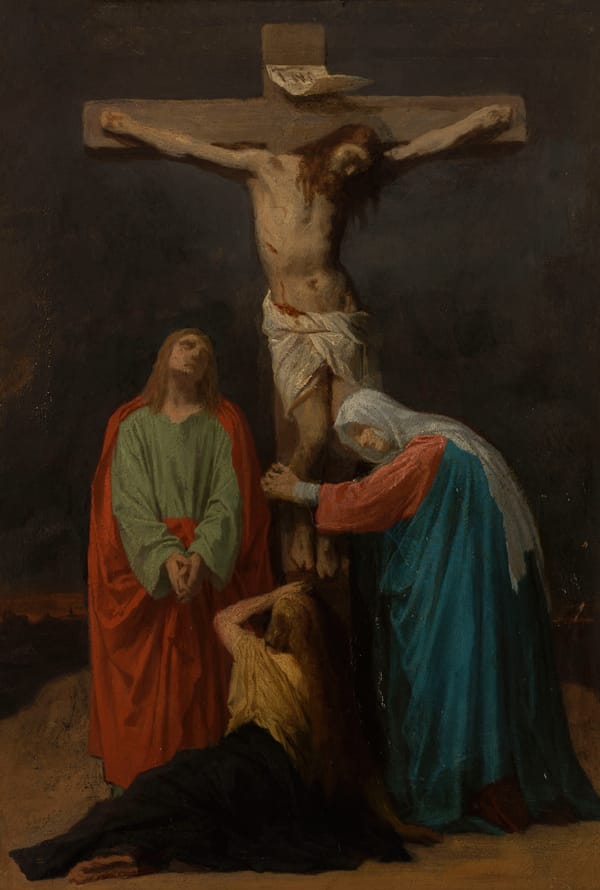Despite the religious subject, the scale and intricate detail indicate that this painting was not for a church setting. Instead, as an independent work of art, a collector would have admired its artistry and unusual combination of Italian and northern European traditions. Likewise, the subject’s novelty would have intrigued a sophisticated patron. Neither Christ’s disrobing before the Crucifixion nor the debate over the plaque identifying him as Jesus of Nazareth, King of the Jews, are common subjects in the Renaissance. Who made this work remains a mystery. The copper surface, complex composition, and atmospheric landscape imply a painter from north of the Alps, as does Christ’s sinuous body. However, the drapery, rich colors, and figures at lower right stem from Venetian Renaissance art.
Free Downloads Below
Hi-Res
1200px
800px
